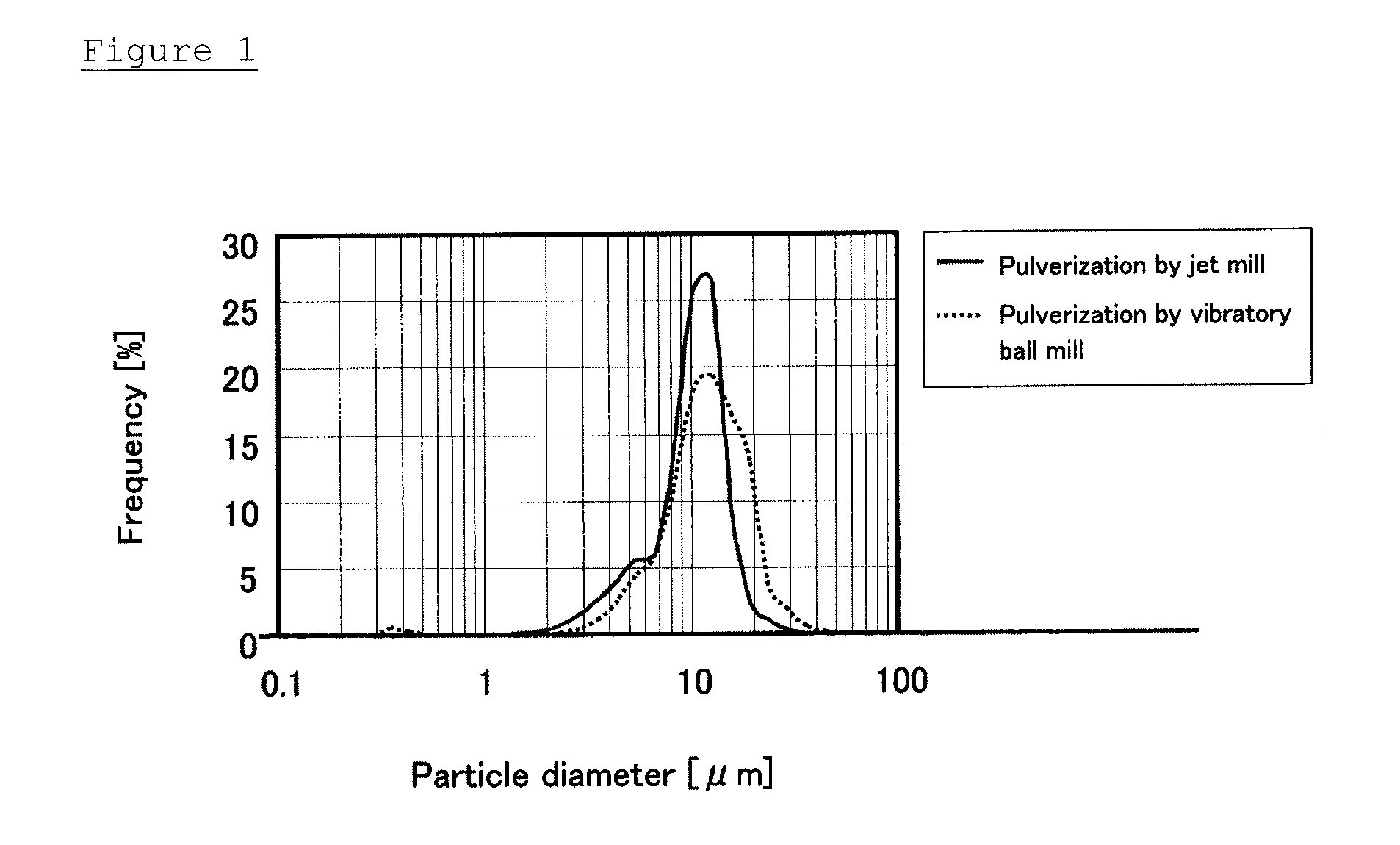Carbonaceous material for non-aqueous electrolyte secondary battery negative electrode
a secondary battery and carbonaceous material technology, applied in the direction of cell components, basic electric elements, chemistry apparatus and processes, etc., can solve the problems of secondary batteries using such carbon materials that the graphite crystal of the graphite or the graphitizable carbon material having developed graphite structures is easily destroyed, and the secondary batteries using such carbon materials are unsuitable for automotive applications. , the effect of low irreversible capacity to charge capacity and high discharge capacity
- Summary
- Abstract
- Description
- Claims
- Application Information
AI Technical Summary
Benefits of technology
Problems solved by technology
Method used
Image
Examples
example 1
[0071]70 kg of a petroleum pitch having a softening point of 205° C. and an H / C atomic ratio of 0.65, and 30 kg of naphthalene, were charged in a 300 liter, pressure-resistant vessel equipped with stirring blades and an outlet nozzle. The mixture was melt-mixed through heating at 190° C., and then cooled to 80 to 90° C. Subsequently, the mixture was extruded from the outlet nozzle by pressurizing the inside of the pressure-resistant vessel with nitrogen gas to form a string-shaped product having a diameter of about 500 μm. Then, the string-shaped product was broken so as to provide a diameter-to-length ratio of about 1.5. The resulting broken product was added into an aqueous solution containing 0.53% by mass of polyvinyl alcohol (saponification degree=88%) and heated to 93° C., followed by stirring for dispersion and cooling to form a slurry of pitch spheres. After removing a major part of water by filtration, the pitch spheres were subjected to extraction with about 6 times by wei...
example 2
[0074]The procedure described in Example 1 was repeated, except that the pre-calcination temperature was changed from 550° C. to 500° C., to prepare carbonaceous material 2.
example 3
[0075]The procedure described in Example 1 was repeated, except that the pre-calcination temperature was changed from 550° C. to 600° C., to prepare carbonaceous material 3.
PUM
 Login to View More
Login to View More Abstract
Description
Claims
Application Information
 Login to View More
Login to View More - R&D
- Intellectual Property
- Life Sciences
- Materials
- Tech Scout
- Unparalleled Data Quality
- Higher Quality Content
- 60% Fewer Hallucinations
Browse by: Latest US Patents, China's latest patents, Technical Efficacy Thesaurus, Application Domain, Technology Topic, Popular Technical Reports.
© 2025 PatSnap. All rights reserved.Legal|Privacy policy|Modern Slavery Act Transparency Statement|Sitemap|About US| Contact US: help@patsnap.com

